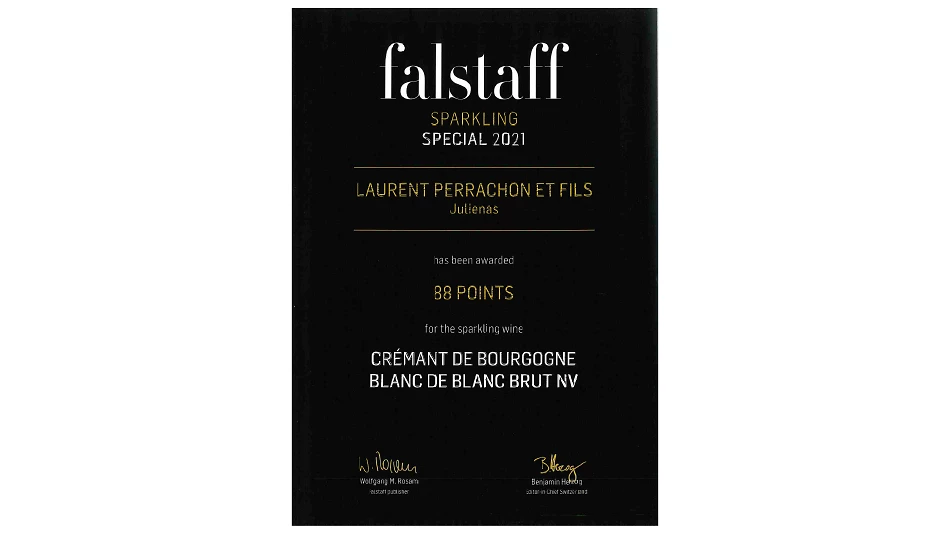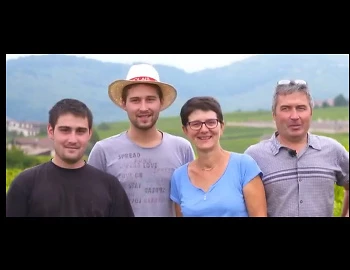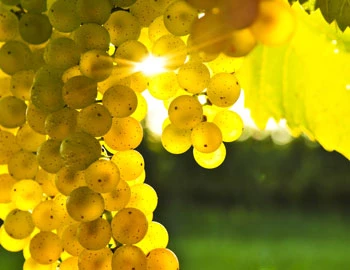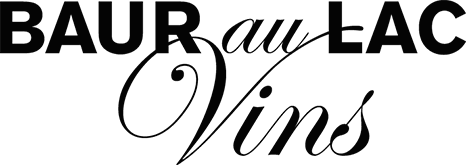
Crémant de Bourgogne Blanc de Blanc brut
AC, Domaine Laurent Perrachon et Fils, 750 ml

| Grape variety: | Chardonnay |
| Producer: | Domaine Laurent Perrachon & Fils |
| Origin: | France / Bourgogne |
Description
Made from 100% Chardonnay and made like a champagne, this crémant is a beautiful alternative in the world of sparkling wines. Fresh and floral on the nose, very lively, but also creamy and stimulating on the palate with notes of citrus fruits, golden delicious and pleasantly adstringency. Fine almond biscuit and honey-butter notes are also present.
Falstaff Sparkling Special: 88 Points

Domaine Laurent Perrachon et Fils scored 88 points on the Falstaff Sparkling Special 2021 with the sparkling wine Crémant de Bourgogne Blanc de Blanc brut NV.
Attributes
| Origin: | France / Bourgogne |
| Grape variety: | Chardonnay |
| Ripening potential: | 2 to 3 years after purchase |
| Drinking temperature: | 10 to 12 °C |
| Food Pairing: | Apéro pastries, Smoked fish, Calamari alla romana, Salad with vegetables, pulses, pasta |
| Vinification: | bottle fermentation, fermentation at low temperatures |
| Harvest: | hand-picking, selecting the grapes (by hand) |
| Maturation: | on the yeast, long cultivation |
| Maturation duration: | 12 months |
| Volume: | 12.5 % |
| Residual sugar: | 6g/l |
| Note: | Contains sulphites |
Domaine Laurent Perrachon & Fils
Since 1877 the family's own vineyards have been cultivated by the 5th and 6th generation.
Established in Juliénas in 1877, they are the 5th (Laurent and Martine) and 6th generation (Adrien and Maxime) to run the family vineyards. The estate now extends over 6 Beaujolais vineyards: Juliénas / Moulin à Vent / Morgon / Chénas / Fleurie and Saint-Amour and also in Beaujolais Villages. In 2019, the Perrachons acquired an additional 1.70 ha in Pouilly-Fuissé with 80-100 year old vines. They continue the work of their ancestors by upholding a time-honoured tradition, as the first mention of the PERRACHON family in the history of winegrowers in Juliénas dates back to 1601. The family works the traditional way, hand-picking, goblet and "cordon de royal" pruning. Their yield per vine is one of the lowest in France, but this guarantees the quality and authenticity of their wines: 8 appellations, 6 vineyards (Crus) in Beaujolais, Chénas, Fleurie, Juliénas, Morgon, Moulin-à-Vent and Saint Amour, our Beaujolais / Villages (red, rosé and white) and Pouilly-Fuissé. They also produce single-vineyard selections, from only the best plots of the estate on selected vineyards.

Chardonnay
King or beggar?
Hardly any variety of vine shows such a broad spectrum of quality as the Chardonnay. Its wines range from faceless neutrality to breath-taking class. It is an extremely low-maintenance vine, which explains why it is grown around the world – even in places where it probably should not be. The aromas of the Chardonnay variety are not very pronounced: a bit of green apple, a little hazelnut; in warmer latitudes, also melon and exotic fruits. The wines are often defined by maturing in casks. They develop more or less subtle notes of butter, toasted bread and vanilla. The grapes achieve their highest expression in their region of origin, Burgundy. Its heart beats in the Côte de Beaune: one might think of the plant growth of Meursault or Puligny-Montrachet. With their finesse and complexity, they can survive for decades. Chardonnay also achieves first class in some Blanc-de-Blancs champagnes. It additionally yields great wines in the Burgundian Chablis, and increasingly in Australia and Chile. A simple rule of thumb for pairing with food: When butter and cream are involved, you cannot go wrong with Chardonnay.

Bourgogne
Burgundy: home of the crus
Burgundy and Bordeaux are France’s most prestigious wine regions. Nonetheless, they are completely distinct in character: while Bordeaux, as the land of the chateaux, enjoys an aristocratic image, Burgundy has retained its rustic agrarian structure. Burgundy stretches for over 200 kilometres, from Dijon in the north to Lyon in the south. In a highly complex jigsaw of the most diverse of terroirs, Chardonnay and Pinot Noir demonstrate the subtle ways in which they embody their sources.

France
France – Philosophy in a bottle
According to French philosophy, wine should be an expression of the soil and climate. They use the word “terroir” to describe this. Terroir makes every wine different, and many especially good. French wine is regarded worldwide as an expression of cultural perfection. The French believe that humans are responsible for the quality of the berries, the vine variety for their character, and nature for the quantity. This philosophy can be expressed succinctly as: “the truth is the vineyard, not the man.”


